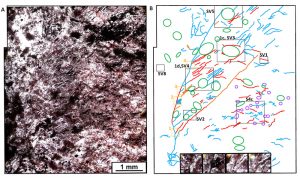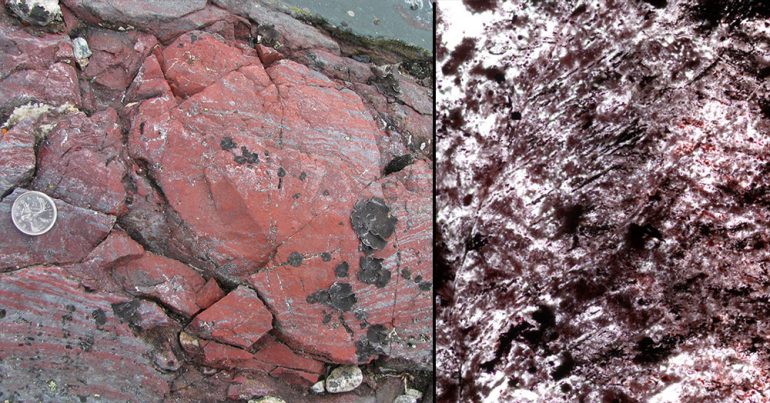Mysterious formations: In northern Canada, researchers have discovered microfossils that may have come from the earliest life forms on our planet – they are about four billion years old. Petrified remains consist of parallel filaments emerging from a common stalk, which are connected by hundreds of oval shapes. According to the team in the journal Science Advances, the complex structure and chemical composition of these structures cannot be explained by abiotic processes alone.
When and where did life first appear on Earth? So far, this is unclear as there are hardly any clear fossils. Researchers therefore rely on indirect clues – for example chemical compounds that are usually created by the activity of living cells, or by specific round or filamentous structures in rock. Among other things, such possible microfossils have been found in rocks older than 3.5 billion years. in Australia and the 3.7 billion year old Greenstone Belt. in Greenland searched for.
still old possible traces of life Researchers in Quebec, Canada discovered in 2017: in the 3.75 to 4.28 billion year old Nuvvugittuk Rock Formation, they encountered filamentous, partially branched hematite filaments, which they interpreted as microfossils. However: these and other possible traces of life are controversial because abiotic geochemical processes can also produce similar structures. These are also known as “chemical gardens”.
A new look at ancient fossils
But are the fossil remains of Quebec really just abiotic pseudo-fossils? To test this, researchers led by Dominic Papineau of University College London have now examined further rock samples from the Nuvvugittuk rock belt. With the help of microtomography and ion beam analysis, they X-rayed a specimen the size of a fistful of rock and created thousands of images of its inner workings.
From these scans, the scientists built a three-dimensional, high-resolution model of the microfossils contained in the rock. In addition, they analyzed the chemical and mineral composition of rock sections up to 100 micrometers thin from these samples using various microscopic and spectroscopic methods.
complex, multidimensional structures
The result: the already familiar filaments are actually part of a larger, more complex structure. In its center is a stalk about a centimeter long, from which thin, parallel branches emerge. These filamentous, coiled extensions average 16 micrometers thick and up to 100 micrometers long, Papineau and colleagues report. Between these filaments lie many small threads and hundreds of oval structures about 120 micrometers long.
“These irregular ellipsoids occur mostly in clusters and are usually arranged linearly and parallel to the filaments,” the team writes. In addition, there are also some large rosette-shaped hematite structures and spherical forms with a filamentous internal structure. All formations contain iron oxide minerals, produced today by iron-processing bacteria, and the carbon in the form of graphite.

cannot be explained purely abiotically
According to the researchers, the complex shape and structure of the newly discovered structures suggest that at least some of them may have formed biologically. “Although abiotic experiments can explain some simple features of filament bundles, none of these features are found in the samples we examined,” wrote Papineau and his colleagues. “Hematite filaments found in Nuvvugittuk Rock do not match observations of known chemical gardens.”
The comparisons show that such abiotic processes cannot form such complex, parallel branching structures. In contrast, such branched forms are known from many microbial fossils from recent Earth history, as the team explains. These include traces of iron-oxidizing bacteria at hydrothermal vents in submarine volcanic fields.
strong signs of early life
Therefore, according to the researchers, it is likely that the microscopic formations in ancient Nuvvugittuk rocks actually come from early organisms. “Our study strongly suggests that different types of bacteria existed on Earth between 3.75 and 4.28 billion years ago,” Papinou says. “This means that life could have evolved about 300 million years after Earth formed – faster by geological standards.”
If confirmed, it would also have far-reaching significance for the search for extraterrestrial life. Because the remains of such early life forms suggest that the first primitive life forms may have evolved relatively quickly after a planet was formed. “If life can develop so quickly under the right conditions, it raises the possibility that there will be life on other planets as well,” Papinou says. (Science Advances, 2022; doi: 10.1126/sciadv.abm2296,
Source: University College London

Internet fan. Alcohol expert. Beer ninja. Organizer. Certified tv specialist. Explorer. Social media nerd.





